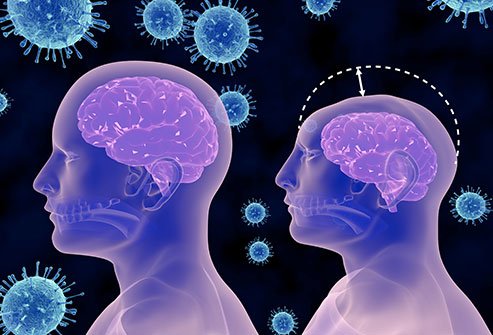Can a Child With Microcephaly Be Normal?

Microcephaly in children is a rare and genetic condition. Some children with microcephaly are both with normal intelligence and have normal developmental milestones, but their heads will always be smaller than normal children for their age and sex. Even in such cases, a regular follow-up with the doctor is advised.
However, other children, depending on the cause and severity of microcephaly, may have several complications such has poor intelligence, developmental delays, poor speech, language, convulsions, lack of coordination and balance, and possibly a shortened lifespan.
What is microcephaly?
Microcephaly is a relatively rare neurological condition that is usually present at birth or in the initial years. It usually occurs as a result of developmental abnormalities of the brain in the womb or poor development after birth. Microcephaly can be caused by various genetic or environmental factors, and the severity varies in each individual. Children born with microcephaly often have developmental problems. There's no cure for microcephaly, but early diagnosis, supportive treatment, and therapies can aid the child's development and improve their quality of life.
What are the signs and symptoms of microcephaly?
The diagnostic sign of microcephaly is a small head size that is significantly smaller than other children of the same age or sex. In severe microcephaly, the child may have backward-sloping of the forehead.
Other signs and symptoms that may be present are as follows:
- Developmental delays
- Intellectual disabilities
- Learning difficulties
- Mental retardation
- Poor speech and language development
- Difficulty in movement and coordination
- Balance problems
- Hearing loss
- Decreased vision
- Difficulty feeding
- Seizures
- Spasticity of the arms and legs (stiffening and tightening of the muscles, affecting normal movement)
- Hyperactivity
- Small stature or dwarfism
- Micrognathia (small chin)
- Thin upper lip
- Flat midface and short nose
What causes microcephaly?
Microcephaly usually occurs as a result of abnormal brain development in the uterus/womb (congenital) or during infancy. The causes include:
- Genetic: Microcephaly can be inherited.
- Environmental factors: Exposure to recreational drugs, alcohol, and certain toxic chemicals during pregnancy can affect brain development.
- Infections: Certain infections acquired during pregnancy can get transmitted to the fetus in the uterus and affect brain development. Some possible infections are the Zika virus, measles, toxoplasmosis, chickenpox, cytomegalovirus, etc.
- Chromosomal abnormalities: Chromosomal abnormalities such as Down syndrome (trisomy 21) or Patau syndrome (trisomy 13) and other conditions can present with microcephaly.
- Cerebral anoxia (decreased oxygen to the fetal brain): This can occur during pregnancy or at the time delivery, where there is decreased oxygen supply to the fetal brain.
- Severe malnutrition: Inadequate nutrition during pregnancy can affect the baby’s development.
- Craniosynostosis: This is the premature fusing of the joints between the bony plates of the skull. This prevents the brain from growing and developing normally.
- Uncontrolled phenylketonuria (PKU): PKU in the mother can affect the baby’s development. PKU is a birth defect that affects the body’s ability to break down an amino acid called phenylalanine.
How is microcephaly treated?
There is no cure for microcephaly, and the complications can’t be reversed. Surgery is available only for craniosynostosis. Treatment of a child with microcephaly involves a team of doctors, teachers, therapists, and other healthcare professionals. Treatment includes management of the child’s condition with speech therapy and physical and occupational therapy to strengthen their abilities and improve their quality of life. Medication may be prescribed to treat certain complications of microcephaly such as seizures and hyperactivity. Hearing problems may be managed with devices to aid hearing such as hearing aids. Vision problems can be managed with prescription eyeglasses.
Surgery for craniosynostosis: Surgery for craniosynostosis involves the separation of the fused skull bones. If there are no other problems in the brain, following surgery, there is adequate space created, allowing the brain to grow and develop normally.

